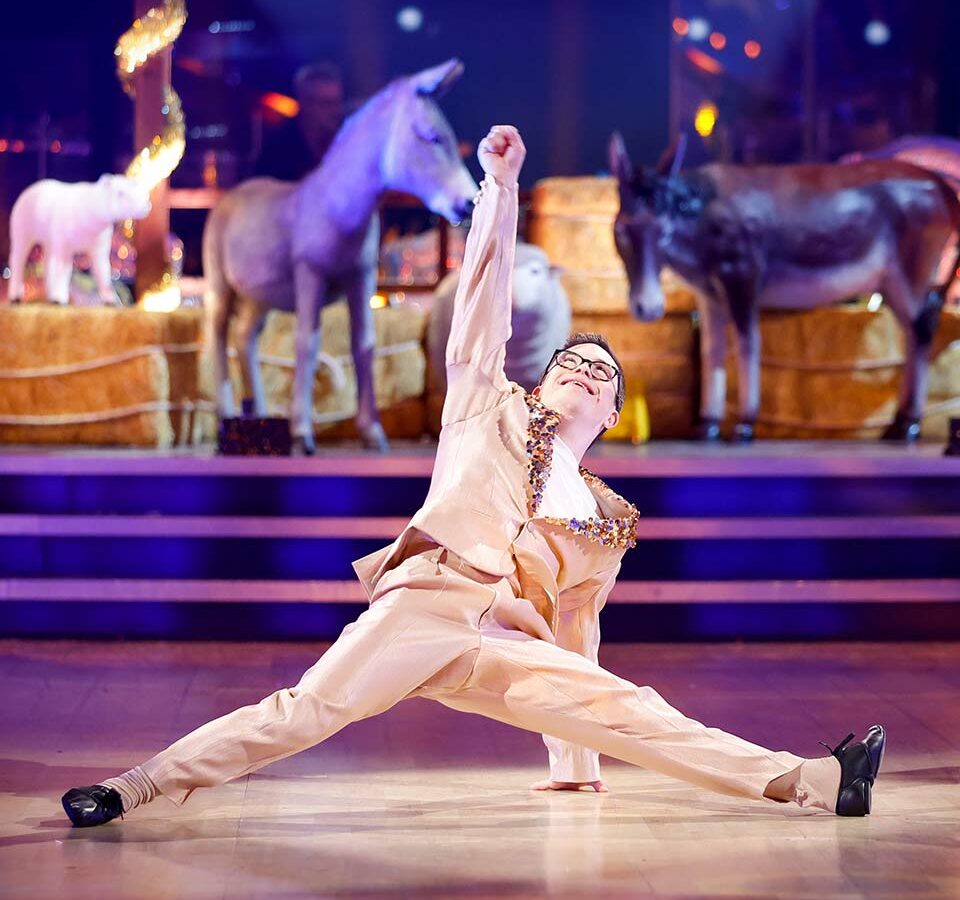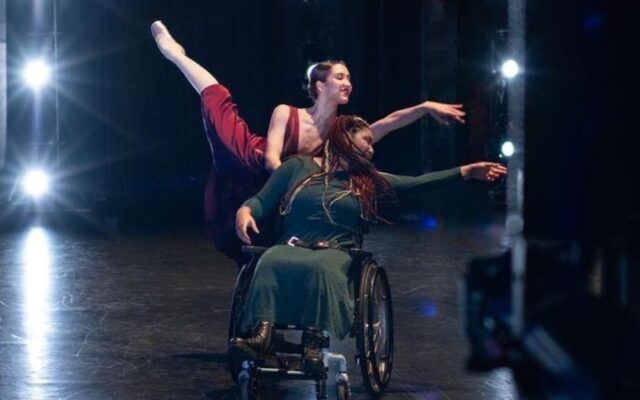For people with disabilities, there are two main ways in which inclusive dance can happen.
They might perform with or alongside non-disabled dancers. We saw this with George Webster on BBC’s Strictly Come Dancing Christmas Special and with deaf actor Rose Ayling-Ellis before that. In the professional dance world, wheelchair user Joe Powell-Main recently performed with the Royal Ballet.
Alternatively, dancers with disabilities might form their own platform to develop and showcase their talent. Groups such as Amici and Candoco have been showing the outstanding talents of dancers with physical disabilities for decades. And Corali Dance Company, which I chair, supports dance created by artists with a learning disability.
A debate arises from this – should disability dance develop independently, or should it be integrated in the mainstream dance world?
I believe these two are not mutually exclusive and, indeed, dancers can cross between them.
George Webster showed a large TV audience that dancers with learning disabilities can be hugely talented. This can be important in changing public attitudes and stimulating interest in the work and performance of other disabled dancers.
Corali and other companies, such as Icandance, Dance Syndrome and Magpie, similarly alter public perceptions about learning disability and spark new thinking and possibilities in the dance world.
When people with disabilities become involved, they bring unique perceptions about performance, the body and expressive movement to the dance floor.
The dance world has to adapt itself to accommodate them, and this very adaptation enhances what dance can offer.
I was overjoyed to see Webster perform in such a setting, and hope that it will raise public consciousness about the amazing possibilities of inclusive dance, in all its forms.
A Strictly night of showbiz pizzazz creates history
Simon Jarrett – 6th April 2023
Strictly Come Dancing Christmas Special – BBC One
George Webster, glittering in a salmon-pink, sequin-lapelled suit, descended from the heavens on a giant golden star then shimmied into his Charleston routine with professional dance partner Amy Dowden.
It could mean only one thing – the Strictly Come Dancing Christmas Day Special. In this very Strictly way, Webster, who is a CBeebies presenter, became the first person with a learning disability – he has Down syndrome – to appear on the show.
Not that this appeared to bother Webster, who wowed the audience and the judges with a mesmerising, entertaining, energetic and (to my eyes) faultless routine. He ended by doing the splits as fireworks erupted around him, to gasps from the audience.
Whoever paired the charming and charismatic Webster with the ultra-likeable Dowden (who has battled throughout her dancing career with acute Crohn’s disease) was a genius – they were a dance-floor marriage made in heaven.
Webster is clearly a Strictly fan, and knew the lingo: “I – loved – every – second – of – it,” he gasped shortly after the dance, as Claudia Winkelman asked how he felt.
The judges are always kinder on the Christmas show, even waspish pantomime villain Craig Revel Horwood. But they raved genuinely about Webster.
“Full of energy and showbiz pizzazz,” proclaimed Revel, “like a party popper going off.”
Anton Du Beke gushed about his timing and musicality, while Motsi Mabuse anointed him “a showmaster”. Head judge Shirley Ballas praised him for “giving 150% of your soul”.
It was all a bit of fun, but George Webster danced his way into a bit of history on Christmas Day 2022.





